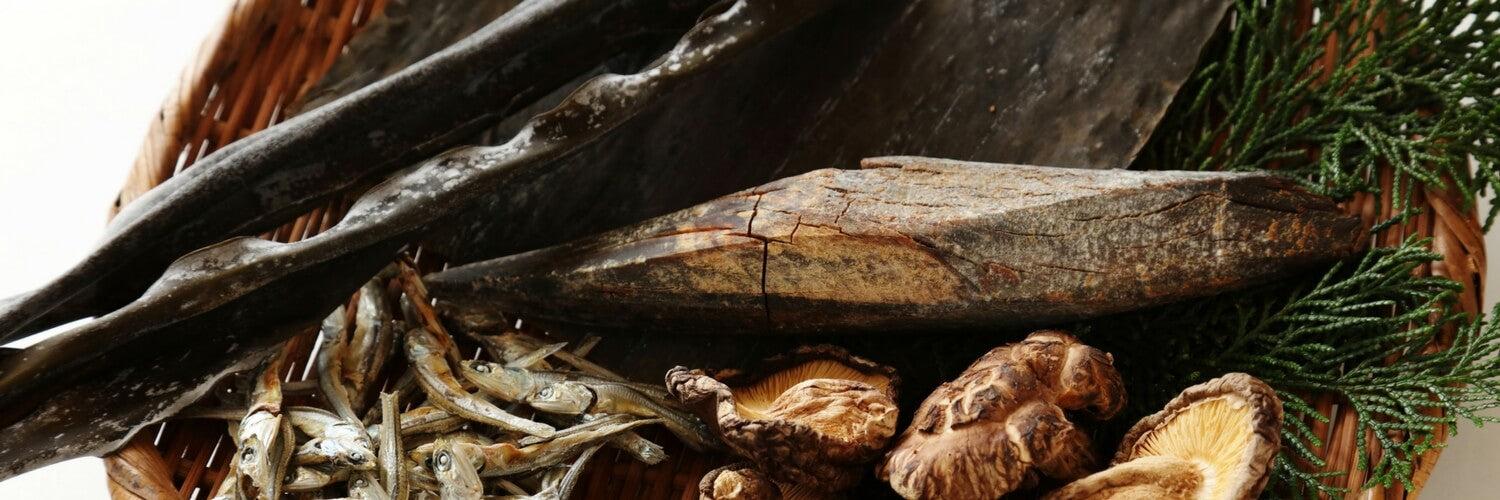
Knowing about different kinds of Japanese dashi enable you to cook Japanese food better and the rewarding umami flavor is well worth it! Learn more and you’ll be able to explore new avenues of wonderful flavor in Japanese cuisine.
If you’ve had Japanese food before, chances are you’re familiar with dashi — it’s the broth that makes up the base of miso soup and also serves to add flavor to many other Japanese dishes. But did you know that there are actually quite a few different types of Japanese dashi stock and that they all have their own unique flavors? In fact, there are even a few vegetarian versions of dashi for those seeking an alternative to the dashi stock normally made with bonito flakes (dried fish). Here are the list of eight typical Japanese dashi available to you.
Awase Dashi
This is the most basic stock that people in Japan use in many different recipes. It is made from fresh kombu (dried kelp) and katsuobushi (dried bonito fish).
The kombu helps to balance out the strong, rich flavor of the bonito flakes, and together, the two ingredients create a lightly flavored, clear broth that delivers distinctive umami to a large variety of dishes.
As an alternative, you can also opt to make dashi from only the kombu or the bonito flakes rather than both together.
Katsuo Dashi
This is dashi made only with the bonito flakes. The resulting broth or remaining fish flakes can be great for flavoring other dishes, including everything from egg custard to furikake, a delicious rice seasoning. Katsuo dashi essentially pairs well with almost any Japanese dish, especially with miso or noodle soups.
Kombu Dashi
Using just the kombu enables you to make a basic vegetarian broth, enabling the natural tastes of other ingredients paired with the broth to shine. Use this broth to boil vegetables such as daikon radish or spinach. You can use this broth instead of water to cook rice for additional subtle flavoring. Or, you can try adding it to eggs before making an omelet.
Other Japanese Dashi Options
To experiment with other unique flavors, consider trying some of these other dashi stocks.
Ago Dashi
This variety of dashi uses the flying fish, which has less fat and more muscle than other types of fish. This results in a less fishy but no less flavorful broth. In fact, the flavor can be quite rich, and it actually is more of a “luxury” dashi. While it can be used with many dishes, it is most often utilized as a broth for udon noodles. Ago dashi is particularly popular in Kyusyu, the southern part of Japan. It’s also popular in the Western area of the Japan islands such as Osaka and Kyoto.
Iriko Dashi (Niboshi Dashi)
This dashi uses yet another fish instead of bonito — dried sardines. The distinctive flavor of sardines adds another level of umami to soups, stews, and vegetables, and is also a great addition to miso paste if you don’t mind a stronger, fishier flavor. But if you do love fish, you’ll definitely love this dashi!
Shiitake Dashi
This stock’s ingredient is of course dried shiitake mushrooms and is another vegetarian alternative. Kombu is a preferable vegetarian stock than shiitake because the mushrooms create a much stronger flavor. However, the bold, unique flavor of the shiitake lends itself very well to shiitake soup. Try using this when cooking with real shiitake mushrooms for even more umami, or add kombu as well to balance out the strong flavor of the shiitake.
Ichiban Dashi and Niban Dashi
Awase dashi, katsuo dashi and kombu dashi, in their first incarnations, are referred to as ichiban dashi, or first dashi. The ichiban dashi is typically good for soups and stews. When the kombu, katsuobushi or both ingredients are used a second time to make a dashi stock, it is referred to as niban dashi — second dashi.
Aside from helping to cut down on waste, the dashi stock created from using the ingredients a second time offers a more subtle flavor. This makes it ideal for adding flavor to dishes composed of meats or vegetables. The subtle taste will further complement rather than overpower the other components of the dish. You can also use it for poaching fish or even steaming other ingredients.
No matter which dashi you choose to make, remember not to discard any of the ingredients after their first use. Use them again to make niban dashi. You can always freeze them until you are ready to use them for other dishes or making sauces.
